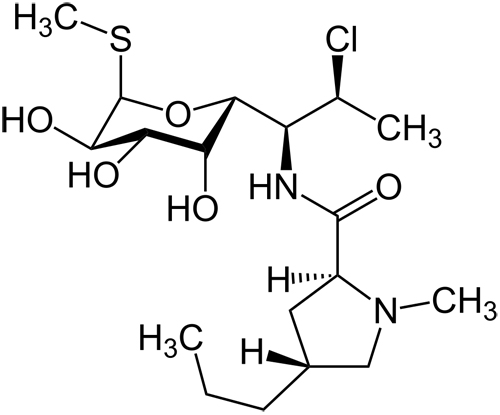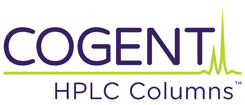Separation of API from Excipients
The Stability and Robustness of this Method makes it an excellent choice for QC of this semi-synthetic antibiotic which is structurally related to Lincomycin. The Chromatogram shown below of Clindamycin is from a complex Pharmaceutical Formulation but note the excellent Peak Shape for it and the Separation from the Excipients.

Peak:
Clindamycin
Method Conditions
Column: Cogent Bidentate C18™, 4μm, 100Å
Catalog No.: 40008-15P
Dimensions: 4.6 x 150mm
Mobile Phase: 40:60 Acetonitrile / 10mM Phosphate Buffer pH 7.5
Temperature: 25°C
Injection vol.: 20μL
Flow rate: 1.0mL / minute
Detection: UV @ 338nm
Notes: Normally used to treat infections with anaerobic bacteria, this drug is indicated for use against Protozoal diseases such as Malaria. Also used for Acne can be useful against some some MRSA infections. Clindamycin is marketed under various trade names including Dalacin, Cleocin, Evoclin and Duac as well in generic form. Molecular Weight of the Clindamycin is 424.99 with a pKa of 7.6 and is soluble in Water, Pyridine, Ethanol and DMF.
If you use the Phosphate Buffer on the Bidentate C8 Column, you should dedicate the Column to use with Phosphates in the Mobile Phase.
Attachment
No 71Clindamycin Antibiotic Tablet Analyzed with HPLC pdf 0.2 Mb Download File


